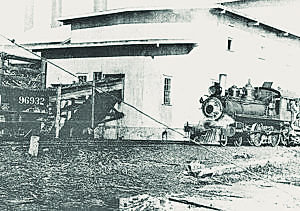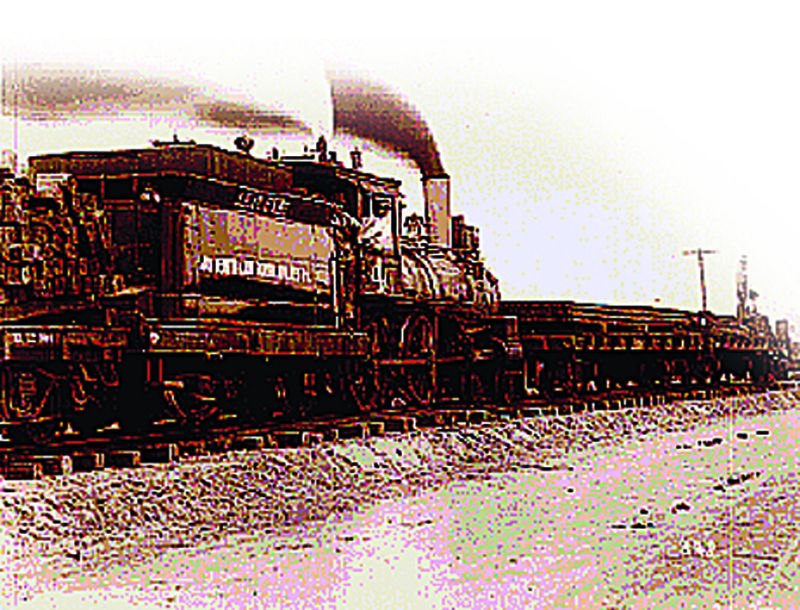BY NORMAN ROZEFF
EDITOR’S NOTE: This is the next installment in an ongoing series on San Benito’s Sam Robertson. Find earlier stories at www.valleystar.com.
The local newspaper carried a story noting that Sam Robertson was planning a one-mile spur of his interurban line from Los Indios to the Harlingen pumping station. With this extension the Harlingen Irrigation District projected land values to increase and that the land would be developed. Up to 1,000 acres of sugarcane were expected to be planted, the crop then to be transported to the San Benito mill.
Some area growers had already anticipated a renewed sugarcane interest. Earlier in the year the Barber Plantation Co. of San Benito was organized with $50,000 capital. Its purpose was to grow and sell sugarcane. Involved in this endeavor were Charles E. Barber, H. K. Barber, and C. M. Roberts.
Early in 1916, Hiram Hart and others formed the Sunset Sugar Company, a New York corporation, to take over the assets of the Rio Grande Sugar Company. In February it purchased from C. P. Barreda, a tract of 2,000 acres about five miles northwest of Brownsville. Out of it had 900 acres been cleared, but 1,100 were still in brush. Immediately 300-500 men and 100 teams of mules began preparing 500 acres for planting to cane with only 2,000 tons seed available. The remainder was planned for clearing and planting by January 1917.
A spur track was to be laid near the Gulf Coast Brick and Tile Co. to unload seed near the planting site. Some of this future cane would provide the Donna mill. Together the Donna and San Benito mills had ground only 15 percent of capacity in the 1915-16 season; both had realized substantial profits due to the excellent price of sugar. To facilitate cane transport the San Benito and Rio Grande Valley Railway did construct a spur to the Barreda area where cane was being expanded. In March 1916 the railway had been acquired by the New Orleans, Texas and Mexico Railway Company but continued to operate as a separate company. At this time it operated 165 miles of track and was a key to moving cane to the various mills as they fell in and out of operation for a particular season. Robertson’s dream, as W. W. Housewright tells us in his San Benito Pioneers, was “to build a railroad within one mile of every farmer in the Valley in order to ship sugarcane. He built some 140 miles of track then the farmers quit growing cane.”
This railroad had been, in large part, instrumental in hauling sugarcane from remote field areas to the mills. The railroad gave Rio Hondo a sugar connection. In 1982 upon the 55th year as an incorporated town Rio Hondo conducted related activities. One was a compilation of remembrances put together in a booklet titled “Pioneer Families of Rio Hondo.”
James Taylor noted that the Hartzog family, longtime grocers in Rio Hondo, had come to San Benito in August 1909.
“The San Benito and Rio Grande Valley Railroad-spider web was organized and extended to Rio Hondo. The purpose of the railroad was to haul sugarcane being grown or what was known as the sugar cane tract, just north of Rio Hondo. For a time the sugarcane was shipped by rail to be ground and refined into brown sugar at the old San Benito sugar mill. The mill was built while the Hartzogs were living in San Benito.” The latter moved to Rio Hondo because of the development of the sugarcane industry in the area. The original Rio Hondo developers were Edward H. Smith and William H. Morrison. They developed land out of the Concepcion de Carricitos Grant. In 1907 the San Benito Land and Water Company bought 14,708 acres at $12.50/acre. They sold 1,000 acres of it to the San Benito Sugar Manufacturing Company.
The San Benito Irrigation District during this period had a fixed charge of $6/acre for sugarcane and alfalfa, $4 for cotton, the first crop and fruit, $2 for the second crop of corn, and $10 for garden truck. Laborers were paid 75¢ per day for clearing land. The total cost of clearing ranged from $6 to 12 an acre.
Although the company may have passed through several crises, a Mercedes Tribune article dated 1/11/17 stated that “…the Borderland Sugar Co. operating a mill at San Benito had recently purchased 8,000 acres of land adjoining Mercedes on the east and that 1000 acres will be planted to cane before the end of the month. The entire acreage will be planted next year.” The latter was never culminated.
The San Benito newspaper offered a glimmer of hope for the San Benito mill to operate when it noted the possibility following the destruction of the Harlingen mill by arsonists and the fact that the Donna mill was not ready to grind even as of this date. This was not to be however.
Following the mill’s closure after operating for only four seasons of the six years since its construction, it sat unused for three more years. Then its equipment, which C.P.&L. could not utilize, had a strange fate in store for it. It was sold to Charles F. Murphy, a New Orleans sugar equipment man, for $167,000. Thought was that it would end up in Cuba. The Patout brothers, Hippolyte and William (Willie), from Patoutville, Louisiana purchased three sets of three-roll mills and transported them to their mill in that town. These Reading mill rolls were not installed until the off-season of 1937 when they became the front end of a 17-roll mill train. The well-designed equipment saw long service in their Enterprise Mill, finally being replaced in 1959 after a disastrous fire on March 3, 1959.
This excerpt from J. Carlyle Sitterson’s Sugar Country tells what happened to most of the factory:
“ … In 1919 the Pennsylvania Sugar Company, owner of a refinery in Philadelphia bought about 75,000 acres on the Miami canal, seventeen miles northeast of Miami. By 1921 it had 800 acres in cane, with plans to increase the acreage. It purchased a mill in San Benito, Texas, and removed it to Florida … opened January 19, 1924 when the machinery of the Pennsylvania Sugar Company’s mill began grinding cane. [After expenditures of $3 to 4 million the company abandoned this project. Inadequate water control and lack of knowledge of the effect of copper sulphate in the muck soils were mainly responsible for the failure.] In the meantime the predecessor company to U.S. Sugar Corporation was developing the area just south of Lake Okeechobee despite adversities.
“In September, 1926, a hurricane moved in from Miami across the peninsula and much of the lake poured over the dikes into the small village of Moore Haven and the surrounding country. More than 300 persons were killed or injured, the town was ruined, and the optimism of the growing Everglades farm population was dealt a severe blow. Before this disaster had been forgotten, an even more devastating hurricane swept in from Palm Beach in September, 1928, and hit the Belle Glade area with full force, all but demolishing the small towns of Belle Glade and Pahokee and killing about 2,400 persons”. The Southern Sugar Company continued to expand its holdings nevertheless.
The Canal Point mill of the Florida Sugar and Food Products Company and the Hialeah mill of the Pennsylvania Sugar Company were purchased and moved to Clewiston, where they were combined with new equipment to make a 1,500 ton capacity mill, completed in early 1929 at an estimated cost of $2,000,000.”
Thus it is with some irony that one of South Texas’s last mills became the foundation for Florida’s solid and thriving sugar industry, namely what was to become the country’s largest sugarcane entity — the U.S. Sugar Company.





